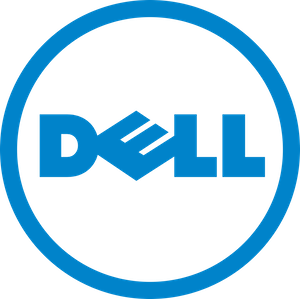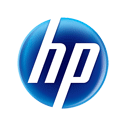
You might have missed the news over the weekend that Broadcom is in talks to buy VMware. As of right now this news is still developing so there’s no way of knowing exactly what’s going to happen. But I’m going to throw my hat into the ring anyway. VMware is what Broadcom really wants and they’re not going to get it.
Let’s break some of this down.
Broad Street
Broadcom isn’t just one of the largest chip manufactures on the planet. Sure, they make networking hardware that goes into many of the products you buy. Yes, they do make components for mobile devices and access points and a whole host of other things, including the former Brocade fibre channel assets. So they make a lot of chips.
However, starting back in November 2018, Broadcom has been focused on software acquisitions. They purchased CA Technologies for $19 billion. They bought Symantec the next year for $10 billion. They’re trying to assemble a software arm to work along with their hardware aspirations. Seems kind of odd, doesn’t it?
Ask IBM how it feels to be the dominant player in mainframes. Or any other dominant player in a very empty market. It’s lonely and boring. And boring is the exact opposite of what investors want today. Mainframes and legacy computing may be the only thing keeping IBM running right now. And given that Broadcom’s proposed purchase of Qualcomm was blocked a few years ago you can see that Broadcom is likely at the limit of what they’re going to be able to do with chipsets.
Given the explosion of devices out there you’d think that a chip manufacturer would want to double and triple down on development, right? Especially given the ongoing chip shortage. However, you can only iterate on those chips so many times. There’s only so much you can squeeze before you run out of juice. Ask Intel and AMD. Or, better yet, see how they’ve acquired companies to diversify into things like FPGAs and ARM-based DPUs. They realize that CPUs alone aren’t going to drive growth. There have to be product lines that will keep the investor cash flowing in. And that doesn’t come from slow and steady business.
Exciting and New
VMware represents a huge potential business arena for Broadcom. They get to jump into the data center with both feet and drive hybrid cloud deployments. They can be a leader in the on-prem software market overnight with this purchase. Cloud migrations take time. Software needs to be refactored. And that means running it in your data center for a while until you can make it work in the cloud. You could even have software that is never migrated for technical or policy-based reasons.
However, that very issue is going to cause problems for VMware and Broadcom. Is there a growth market in the data center in an enterprise? Do you see companies adding new applications and resources to their existing enterprise data centers? Or do you see them migrating to the cloud first? Do you imagine given the choice between building more compute cluster in the existing hybrid data center or developing for the cloud the first time that companies are going to choose the former?
To me, the quandary of VMware isn’t that different from the one faced by IBM. Yes, you can develop new applications to run on mainframes or on-prem data centers. But you can also not do that too. Which means you have to persuade people to use your technology. Maybe it’s for ease-of-management for existing operations teams. Could be an existing relationship that allows you to execute faster. But no matter what choice you make you’re incurring some form of technical debt when you choose to use existing technology to do something that could also be accomplished with new ideas.
Know who else hates the idea of technical debt and slow steady growth? That’s right, investors. They want flashy year-over-year numbers every quarter to prove they’re right. They want to see that stock price climb so they can eventually sell it and invest in some other growth market. Gone are the days when people were proud to own a bit of company and see it prosper over time. Instead, investors have a vision that lasts about 90 days and is entirely focused on the bottom line. If you aren’t delivering growth you don’t have value. It’s not even about making money any more. You have to make more all the time.
The Broad Elephant
The two biggest shareholders of VMware would love to see it purchased for a ton of money. Given the current valuation north of $40 billion, Dell and Silver Lake would profit handsomely from a huge acquisition. That could be used to pay down even more debt and expand the market for Dell solutions. So they’re going to back it if the numbers look good.
The other side of this equation is the rest of the market that thinks Broadcom’s acquisition is a terrible idea. Twitter is filled with analysts and industry experts talking about how terrible this would be for VMware customers. Given that Symantec and CA haven’t really been making news recently would tend to lend credence to that assessment.
The elephant in the room is what happens when customers don’t want VMware to sell? Sure, if VMware is allowed to operate as an independent entity like it was during the EMC Federation days things are good. They’ll continue to offer support and make happy customers. However, there is always the chance something will change down the road and force the status quo to change. And that’s the thing no one wants to talk about. Does VMware reject a very good offer in favor of autonomy? They just got out from under the relationship with Dell Technologies that was odd to say the least. Do they really want to get snapped up right away?
Tom’s Take
My read on this is simple but likely too simple. Broadcom is going to make a big offer based on stock price so they can leverage equity. The market has already responded favorably to the rumors. Dell and Silver Lake will back the offer because they like the cash to change their leverage situation. Ultimately, regulators will step in and decide the deal. I’m betting the regulators will say “no” like they did with Qualcomm. When the numbers are this big there are lots of eyeballs on the deal.
Ultimately Broadcom may want VMware and the biggest partners may be on board with it. But I think we’re going to see it fall apart because the approvals will either take too long and the stock price will fall enough to make it no longer worth it or the regulators will just veto the deal outright. Either way we’re going to be analyzing this for months to come.










